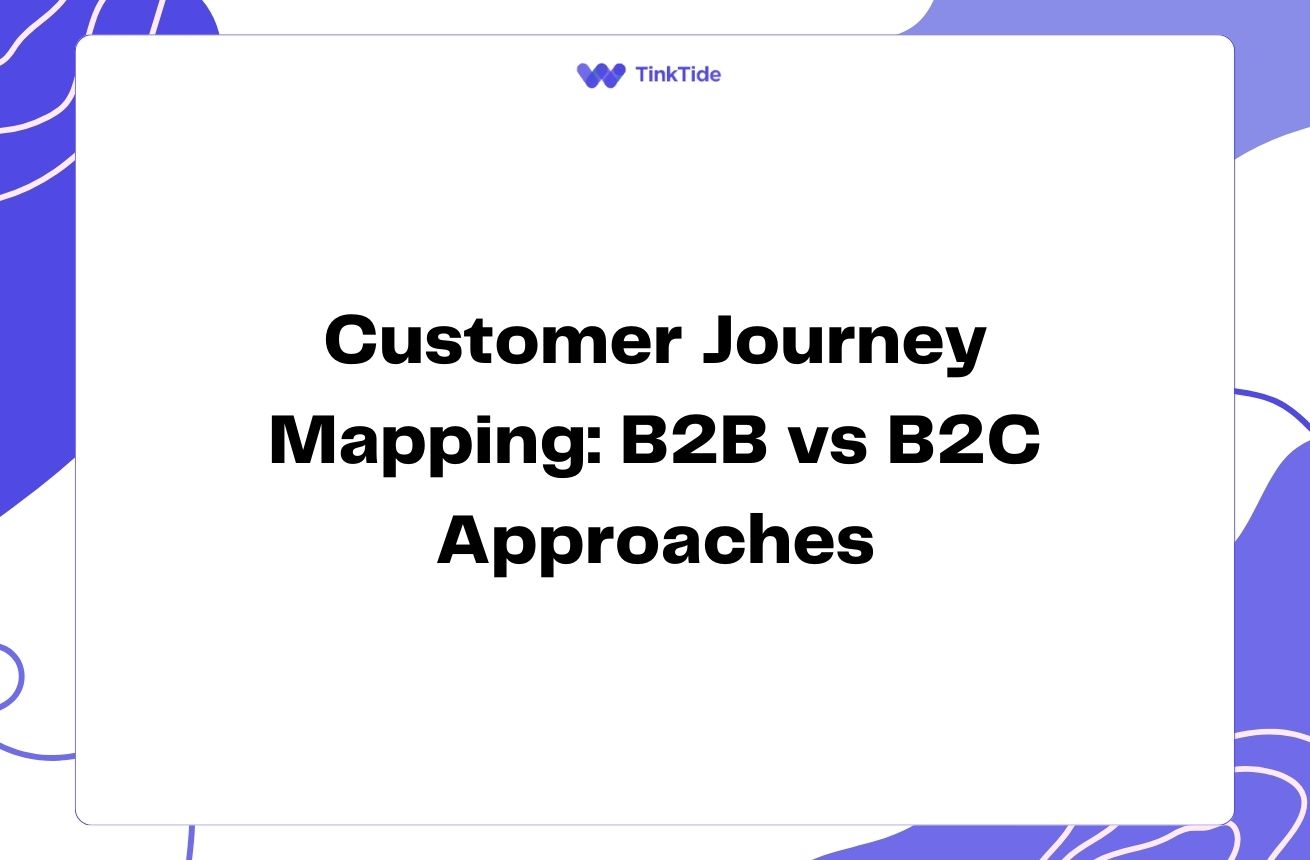AI's Role in Revolutionizing Customer Journey Mapping
The Evolution of Customer Journey Mapping
Customer journey mapping has long been a crucial tool for businesses to understand and optimize their customers' experiences. Traditionally, this process involved manual data collection, analysis, and visualization, which could be time-consuming and prone to human error.
Enter artificial intelligence (AI), a game-changing technology that's revolutionizing how businesses approach customer journey mapping. AI's ability to process vast amounts of data quickly and accurately is transforming this essential business practice, making it more efficient, insightful, and actionable than ever before.
By leveraging AI in customer journey mapping, companies can gain a deeper understanding of their customers' behaviors, preferences, and pain points. This enhanced insight allows for more targeted improvements and personalized experiences, ultimately leading to increased customer satisfaction and loyalty.
Key Benefits of AI in Customer Journey Mapping
Integrating AI into customer journey mapping processes offers numerous advantages for businesses. Here are some of the most significant benefits:
- Real-time data analysis and insights
- Automated pattern recognition and trend identification
- Predictive modeling for customer behavior
- Personalized customer experiences at scale
- Improved accuracy and reduced human bias
AI-Powered Data Collection and Analysis
One of the most powerful applications of AI in customer journey mapping is its ability to collect and analyze vast amounts of data from multiple touchpoints. AI-powered tools can automatically gather information from various sources, including website interactions, social media engagement, customer service logs, and purchase history.
Machine learning algorithms can then process this data to identify patterns, trends, and correlations that might be missed by human analysts. For example, IBM Watson uses natural language processing to analyze customer feedback and sentiment across multiple channels, providing businesses with a comprehensive view of their customers' experiences.
This automated data collection and analysis not only saves time but also provides more accurate and comprehensive insights into customer behavior. As a result, businesses can make data-driven decisions to improve their customer journeys and overall customer experience.
Predictive Analytics for Customer Behavior
AI's predictive capabilities are particularly valuable in customer journey mapping. By analyzing historical data and current trends, AI can forecast future customer behaviors and preferences with remarkable accuracy.
For instance, Salesforce Einstein uses AI to predict which customers are most likely to make a purchase, churn, or require additional support. This foresight allows businesses to proactively address potential issues or capitalize on opportunities within the customer journey.
Predictive analytics can also help businesses identify the most effective touchpoints and channels for engaging with customers. This insight enables companies to optimize their marketing efforts and allocate resources more efficiently, ensuring a smoother and more satisfying customer journey.
Personalization at Scale
AI enables businesses to deliver personalized experiences to customers at a scale that would be impossible through manual efforts alone. By analyzing individual customer data and behavior patterns, AI can tailor content, product recommendations, and communication strategies to each customer's preferences and needs.
For example, Adobe Target uses AI to dynamically personalize website content and product recommendations based on a visitor's browsing history and preferences. This level of personalization can significantly enhance the customer journey, leading to increased engagement, conversion rates, and customer satisfaction.
Moreover, AI-powered chatbots and virtual assistants can provide personalized support and guidance throughout the customer journey, ensuring that customers receive timely and relevant assistance at every touchpoint.
Automated Journey Visualization and Optimization
AI can automate the process of visualizing and optimizing customer journeys, making it easier for businesses to identify areas for improvement and implement changes quickly. Machine learning algorithms can analyze customer data to create dynamic, interactive journey maps that update in real-time as new information becomes available.
These AI-generated journey maps can highlight pain points, bottlenecks, and opportunities for improvement across various touchpoints. For instance, Pointillist uses AI to automatically generate customer journey maps and identify the most impactful opportunities for improving customer experience and business outcomes.
By automating the journey mapping process, businesses can save time and resources while gaining more accurate and actionable insights. This allows companies to continuously optimize their customer journeys and stay ahead of changing customer expectations.
Implementing AI in Customer Journey Mapping
To successfully leverage AI in customer journey mapping, businesses should follow these key steps:
- Assess current data collection and analysis processes
- Identify specific goals and KPIs for AI implementation
- Choose appropriate AI tools and platforms
- Integrate AI solutions with existing systems
- Train staff on using AI-powered insights
- Continuously monitor and refine AI models
Challenges and Considerations
While AI offers tremendous potential for enhancing customer journey mapping, there are some challenges and considerations to keep in mind. Data privacy and security are paramount, especially when dealing with sensitive customer information. Businesses must ensure compliance with regulations like GDPR and maintain transparent data practices.
Additionally, it's important to strike a balance between AI-driven insights and human intuition. While AI can provide valuable data-driven recommendations, human expertise is still crucial for interpreting results and making strategic decisions.
Lastly, businesses should be prepared for the ongoing maintenance and refinement of AI models. As customer behaviors and market conditions change, AI systems need to be regularly updated to ensure their accuracy and relevance.
Address common questions
Here are some frequently asked questions about using AI in customer journey mapping:
How does AI improve the accuracy of customer journey mapping?
AI improves accuracy by analyzing vast amounts of data from multiple sources, identifying patterns and trends that humans might miss. Machine learning algorithms can process information more quickly and objectively than manual analysis, reducing the risk of human error or bias.
Can AI completely replace human involvement in customer journey mapping?
While AI can automate many aspects of customer journey mapping, human involvement remains crucial. AI provides data-driven insights, but human expertise is needed to interpret results, make strategic decisions, and understand nuanced customer emotions that AI might not fully capture.
What types of data can AI analyze for customer journey mapping?
AI can analyze a wide range of data types, including structured data (e.g., purchase history, demographic information) and unstructured data (e.g., social media posts, customer reviews, support chat logs). This comprehensive analysis provides a more holistic view of the customer journey.
How can small businesses benefit from AI in customer journey mapping?
Small businesses can benefit from AI through cloud-based solutions that don't require significant infrastructure investments. These tools can help small businesses gain insights typically associated with larger enterprises, leveling the playing field and enabling more personalized customer experiences.
What are the potential risks of using AI in customer journey mapping?
Potential risks include data privacy concerns, over-reliance on AI-generated insights without human oversight, and the possibility of biased results if AI models are trained on incomplete or skewed data. It's important to implement AI responsibly and maintain a balance between automation and human judgment.
How long does it take to see results from implementing AI in customer journey mapping?
The timeline for seeing results can vary depending on the complexity of implementation and the quality of existing data. Some businesses may see initial insights within weeks, but realizing the full potential of AI in customer journey mapping typically takes several months of data collection, model training, and refinement.
Provide additional resources
McKinsey: The value of getting personalization right
Insights on the impact of personalization in customer experience
Gartner: Customer Journey Mapping
Overview of customer journey mapping best practices
MIT Sloan: AI in Customer Experience
Analysis of AI applications in customer experience management
Harvard Business Review: AI and Customer Service
Discussion on balancing AI and human elements in customer service
Forbes: AI in Marketing
Exploration of AI's impact on digital marketing strategies
Embracing the Future of Customer Journey Mapping
As we've explored, artificial intelligence has the potential to revolutionize customer journey mapping, offering businesses unprecedented insights and capabilities. By leveraging AI, companies can create more accurate, dynamic, and personalized customer journeys that drive satisfaction and loyalty.
The integration of AI into customer journey mapping processes is not just a trend, but a necessary evolution for businesses looking to stay competitive in an increasingly digital and customer-centric marketplace. As AI technologies continue to advance, we can expect even more innovative applications that will further enhance our ability to understand and optimize the customer journey.
To harness the full potential of AI in customer journey mapping, businesses should start by assessing their current processes, identifying key areas for improvement, and gradually implementing AI-powered solutions. By doing so, they can unlock new levels of customer understanding and create experiences that truly resonate with their audience.
Revolutionize Your Customer Journey Mapping with AI
Discover how our AI-powered platform can transform your approach to customer experience.
Start Your Free Trial
